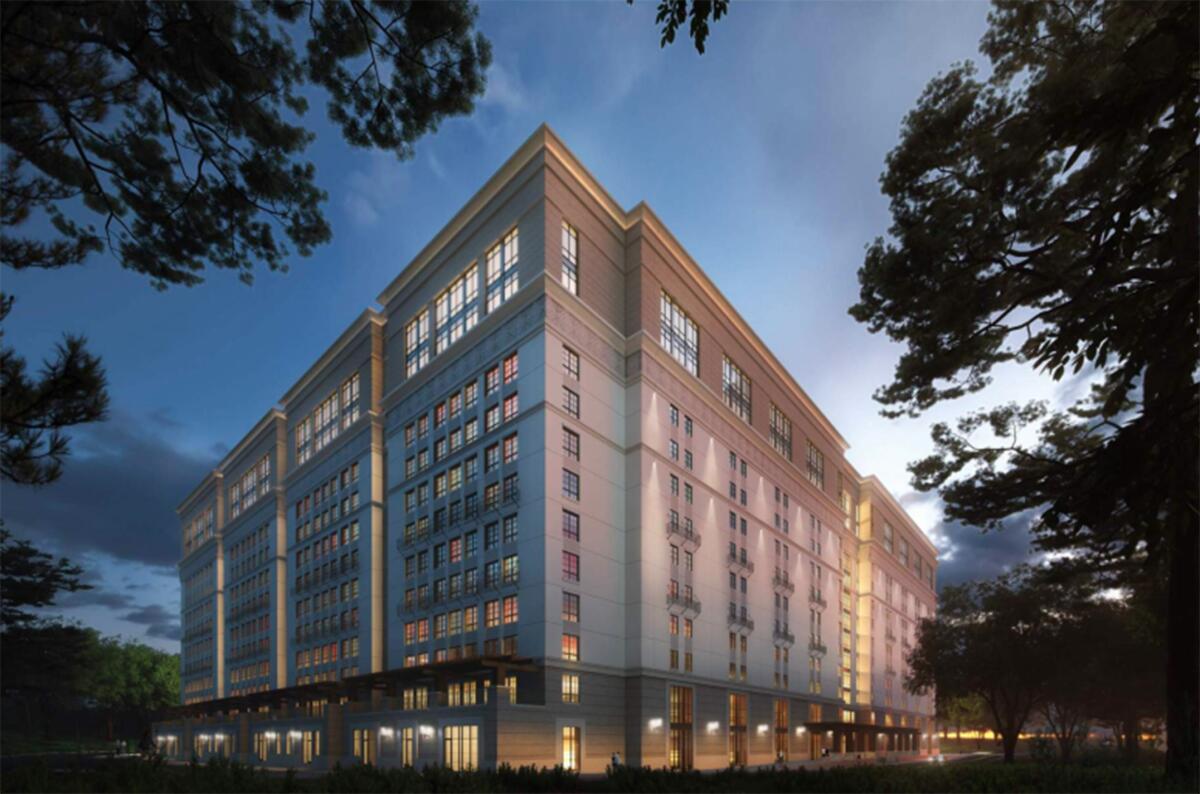Editorial: UC is at the tipping point with overcrowding. Don’t let it become an education factory

- Share via
During the decade before the COVID-19 pandemic, student satisfaction with a University of California education was slowly but steadily sliding downward. The biggest source of unhappiness: crowding, which often meant the inability to get into required courses, or even to get into a sought-after major.
The crowding situation has only worsened. In September, the dean of undergraduate studies at UC Santa Barbara warned the campus president and other university leaders that a dire shortage of courses meant freshmen couldn’t always get even the minimum number of units they needed, let alone the courses they wanted or those that might be required for a future major.
“The inescapable logic of this,” Dean Jeffrey Stopple wrote in an email obtained by the Santa Barbara Independent, “is that we are enrolling more students than we can educate on a four-year, three-quarter schedule. This is impacting our graduation rates, most notably for students for whom summer is too expensive.”
Lack of housing is an issue at almost every campus. Environmental lawsuits targeted growth plans at both UC Berkeley and Santa Cruz. Some students at UC San Diego have resorted to forking over the money for hotel rooms if they can afford it, or living out of their cars if they can’t. The ugliest solution to overcrowding so far is UC Santa Barbara’s decision to go along with a billionaire donor’s design monstrosity: a dormitory that would house 4,500 students, almost all of them in tiny, windowless rooms. The future students of the school can only hope that the regents reject the dorm, or they might opt to live out of cars themselves, just to get the sunlight.
At UCLA, the student newspaper reported last year on students buying and selling spots in coveted classes through Facebook.
The bottom line: The UC system is over-enrolled and at a tipping point, in danger of no longer being the internationally admired gem of public higher education. Demand among qualified students for an undergraduate spot grows each year, and the university has been trying to meet that demand by accepting more applicants. For this academic year, the number of freshman admits grew 11% to more than 132,000, the largest number in UC history. The number of accepted transfer students also reached a record level.
Federal pandemic rescue funding means there’s enough money to educate students, for now at least — but there isn’t enough capacity. The campuses’ ability to build more dorms and classrooms — all of which would take considerable amounts of time — is finite.
UC is planning ways to push more students through the system, some more worthwhile than others. It could conduct summer sessions as true quarters or semesters, instead of the pay-by-the-unit situation most campuses use. That would make better use of existing facilities and allow more students to graduate on time, or even early.
But that also requires having enough instructors, which means either paying existing faculty members a premium to teach during the summer or hiring more professors. UC also is looking at whether students in some majors could earn a bachelor’s degree in less than four years.
Other, less-appealing options: Satellite campuses. Off-campus dorms. More online courses that can handle many hundreds of students per class.
But university officials must tread carefully. Occasional online courses might help some students meet their course requirements, for example, but students are signing up to attend the University of California, not the University of Phoenix. The university already has been limiting the numbers for international and out-of-state students, but the campus experience is enriched by having geographical diversity as well as racial and economic diversity.
The UC system has plans to continue growing enrollment significantly over the next decade, but there’s just so much its schools can handle without the university becoming an efficient churn-them-out degree factory with a fading reputation.
There’s also just so much expansion the cities where campuses are located can handle. UC Berkeley’s enrollment, undergraduate and graduate, has increased by about 6,000 over the last decade to 42,000 today, in a city with a population of 121,000. The city and residents rebelled against its expansion plans until the university agreed to limit campus growth of undergraduates to 1% per year; it’s counting on satellite campuses to enable further growth.
Building another campus would take too long. The regents decided in 1988 to build a new school in the San Joaquin Valley; UC Merced opened to students in 2005.
But there are existing public university campuses that the state could consider converting into new UC schools. Sonoma State and Humboldt State, for example, are underutilized after years of declining enrollment. Their students could be absorbed by other California State University campuses that have been losing enrollment at a slower rate, and Cal State students who meet UC requirements could attend once UC has built more capacity.
That’s a much better solution than students selling their seats in needed classes or campuses wedging freshmen into a nearly windowless dorm that makes a sardine can look good.
More to Read
A cure for the common opinion
Get thought-provoking perspectives with our weekly newsletter.
You may occasionally receive promotional content from the Los Angeles Times.










